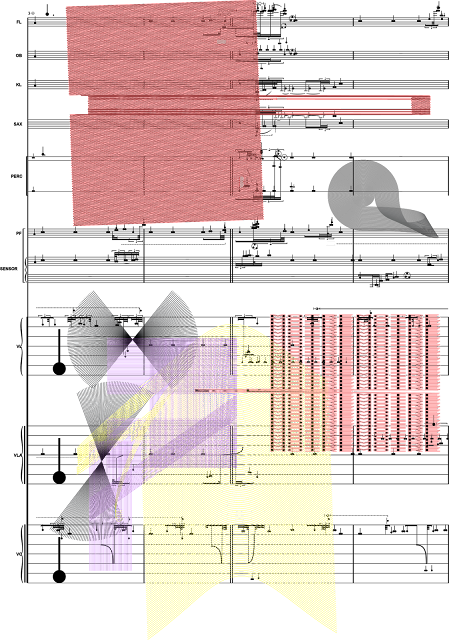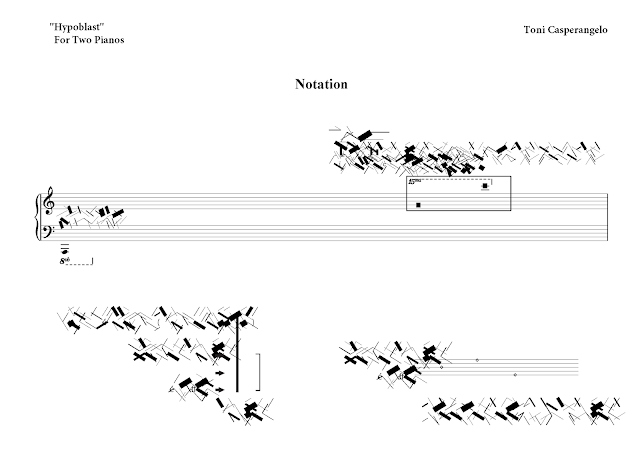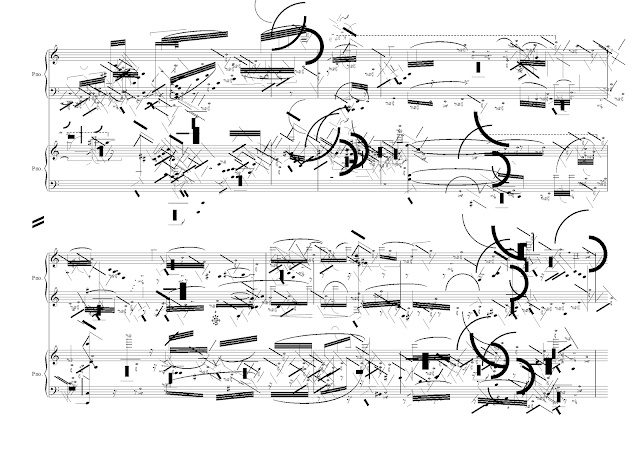I have introduced disruptively radical formalities within the context of my compositional work…
...schedule 1 and 2 pharmacological
substances to be ingested by the performer at specified junctures in my
compositions
1. Activities not condoned in the centric normalities of
compositional practice
2. Vagaries to the balance of instrumental performance.
As a composer, I love the challengers; the naysayers; the dilettantes.
In the eloquent, profound lyrics of Kanye West's 'Runaway' I find a beautiful message ..."I'm So Gifted to Find what I Don't Like the Most"..."Let's Have a Toast for The Douchebags..."...
I detest the 'The Schism of
Blah'
Now, I level a theorem of a composer’s and
performer’s sexual prostitution … this exists today and some will deny that it
is an integral component of moving music past the schism of blah.
…And The Schism of
Blah. Here We Go.
Composition, Sex,
Prostitution and The Outliers. And This
is Appropriated Musicalis
Moving past theories
created by James Trey Caldwell, Moses Zeaniteirre identifies two general views
one could have about the ethics of sexual activity in it’s relation to the
composer and the performer. This is an
extrapolation of a general principle of prostitutional appropriation in
compositional ecosystems.
Sex is music and music
is sex. Music is the Outlier.
Let’s distance the
music. (for a minuscule moment)
The Strong
Significance View: Sex is only permissible when it is the expression of
romantic love (i.e. when it has romantic significance).
The Weak Significance
View: Sex is permissible when it is an expression of romantic love, and also,
sometimes, when it is not.
{MUSIK}
The weak significance
view embraces the permissibility of casual sex.
Casual music? That of Azealea or Iggy Azalea? {Someone could advise Billone, or Lachenmann that it is now ... "All About The Bass")
That is: ephemeral (or
ongoing) sexual hook-ups between consenting adults with a minimum of emotional
or psychological baggage. The strong significance view rules these out. This is Brahms.
Fortissimo? FoRnicatissimo?
If we assume that the
weak significance view is correct, then we should also embrace the
permissibility of (at least some types of) prostitution. Cage/Feldman.
Rothko Chapel is not what it appears to be. Sorry Claire.
Or so, at least, Moses
Zeaniteirre argues. For if sexual activity is unobjectionable when it is
without romantic significance, then what is the harm in the commodification of
such activity?
The Oboe II?
What can money add to
the transaction that transforms it into something worthy of moral censure?
The Contrbassoonist is
auctioned off for his/her sexual prowess to the highest bidder in the
audience.
“Lots”, you’ll cry.
But be patient, we’ll get to the modest objections in a moment. For now, we’ll
focus on the prima facie claim. For my part, I think Moses Zeaniteirre’s
starting assumptions touch upon something important, something I’ll call
the intrinsic unobjectionability
of music and sexual manipulation...

(...a quick aside...Sciarrino will never get "The Bass"...as in Meghan Trainor)
So let's digress...I challenged the sancticity (if you don't like the word, check out Coleman Hawkins...I do words for a living too) of G-Scelsi when he was anointed at Darmstadt years ago.
Scelsi is brilliant, but why not look under the covers? This does not change the music, but adds tremendous insight. Funny musicologists challenged my claims and no one has ever uncovered the simple fact that this dude was rich and he existed under a myriad of pseudonyms.
OK...let's move on.
This sexopothesis is the notion
that, in and of itself, the activities involved in most sexual practices are
morally unobjectionable (certain extreme forms of S&M might be special
cases, requiring independent consideration generally ascribed to the
percussionist).
This should be unsurprising given that sex is often deemed to
be an important, and valuable part of musical performance.
So true of this is human
life as well.
What makes a moral
difference are the properties that are associated or combined with these acts.
 Music – Sex
Music – Sex
These come in two main
varieties: (a) the beliefs and attitudes of the participants to the acts; and
(b) the downstream consequences or effects of the acts.
Thus, for example,
rape and sexual assault are objectionable because one (or more) of the parties
to the sexual activity lacks consent. This is what transforms what is otherwise
acceptable into something that is unacceptable. In a similar vein, sexual
activity that is carried out with the purpose (and effect) of humiliating or
exploiting someone for gain is objectionable (e.g. as in sexual blackmail
through the release of sex tapes).
If blackmail occurred
by music transgressions…mix tapes?
If we accept this
basic picture of sexual activity, we have a model for how to argue and reason
about the ethics of sex and composition.
In particular, we know
not to look directly at the sexual acts themselves (except in the extreme cases
mentioned above) but rather to the extrinsic properties that can be associated
with those acts.
Are these objectionable?
Are they dissociable?
In the case of
prostitution, we are always looking at the combination of sex with a monetary (or
other economic) exchange. We are wondering whether the combination of the two
is enough to transform what is otherwise unobjectionable into something that
is.
We are all well aware
that every flautist is capable of this.
 Moses Zeaniteirre
wants to argue that it is not, that adding the economic exchange to sex makes
no more difference than adding an economic exchange to other unobjectionable
activities.
Moses Zeaniteirre
wants to argue that it is not, that adding the economic exchange to sex makes
no more difference than adding an economic exchange to other unobjectionable
activities.
Is he right? He’s obviously not had the flautist.
Let’s see.
Martha Nussbaum, in
her famous
article about the topic, identifies different
aspects to objectification, ranging from fungibility to instrumentalization to
denial of subjectivity.
Martha knew her music. And perhaps orchestration as well.








%2BFermion%2BSystem.jpg)








































